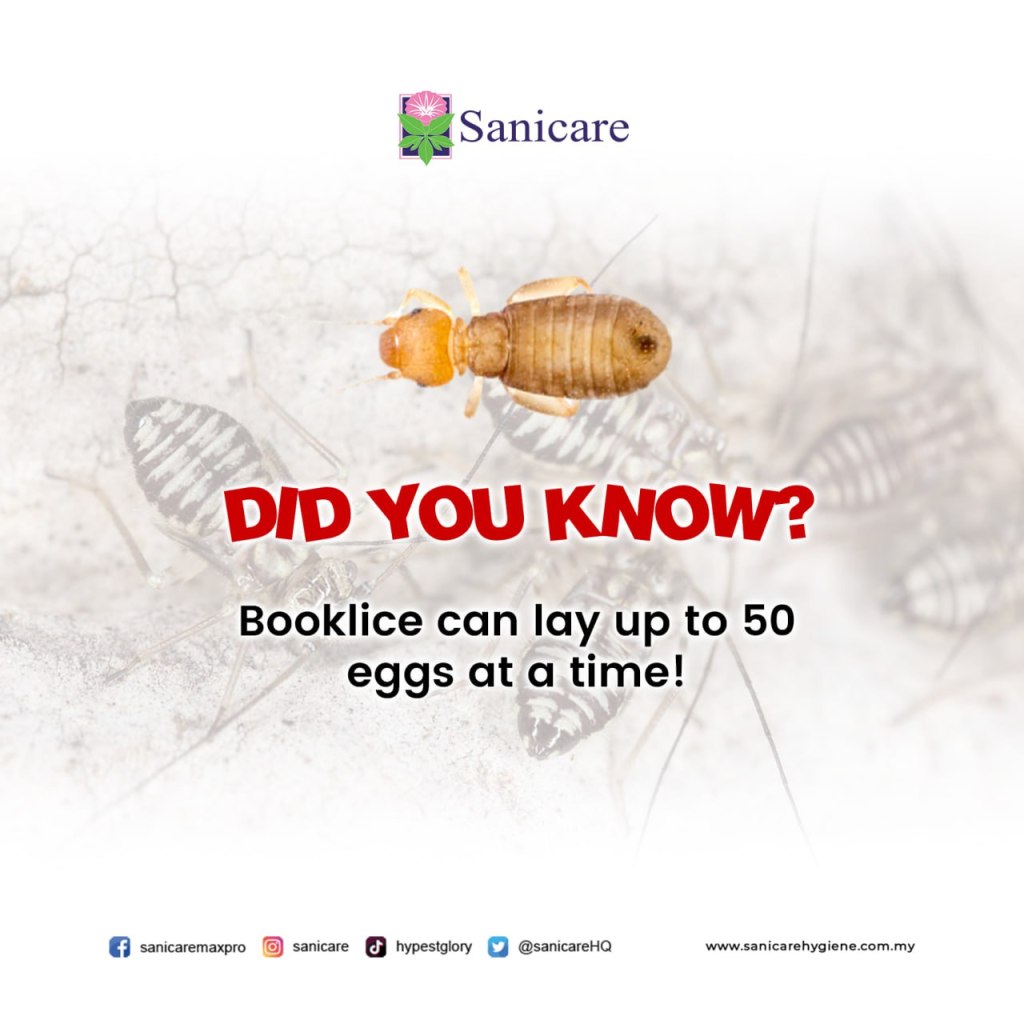
Booklice or Psocids (Order Pscoptera) are not true lice, although they do resemble immature human lice, they are not parasitic. They are harmless except for contamination of foods and they are nuisances merely by their presence in the homes, food storage and processing building, and other structures. Although these pests are harmless, they are very annoying to live with and can cause itching when they crawl on human skin.
Booklice are common household pests, smaller than a pinhead (usually about 1 – 1.5 mm long) that are attracted to dry powdery type foods. They do not like the light but prefer to live in dark, warm, humid places such as the folds of packaging in food cupboards.

Booklice eat microscopic spores of moulds so are attracted to any mouldy plant-based material, including cereals, grains, and furniture. They also feed on starchy materials, including the starch-filled paste of book bindings and wallpaper. In homes, booklice typically are found in damp, warm, undisturbed places where mold and fungi are growing.
Adult booklice can live for 6 months and produce two generations per year. The adult female lays up to 100 eggs that take 2-4 weeks to hatch into nymphs. The nymphs are smaller, but similar in appearance to the adult. The life cycle from egg to adult takes 2-3 months.
The best way to prevent booklice is by disposing of items that are heavily infested, reducing the humidity in your home, and increasing ventilation in storage areas. Reducing the humidity to 50% will eventually kill booklice in your home. Ventilate your bathroom and kitchen, open your windows regularly, store dry foods in well-ventilated areas, and patch up any leaks you might find around the home. Booklice infestation needs to be addressed early on to prevent it from getting out of control and insecticides do nothing if moisture remains.
For an effective booklice eradication or any pest you encountered, please do not hesitate to contact us.
Thank you.
